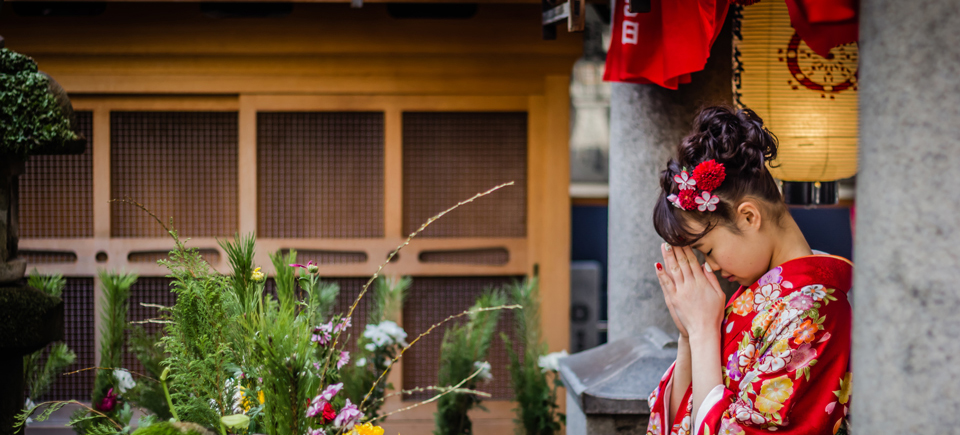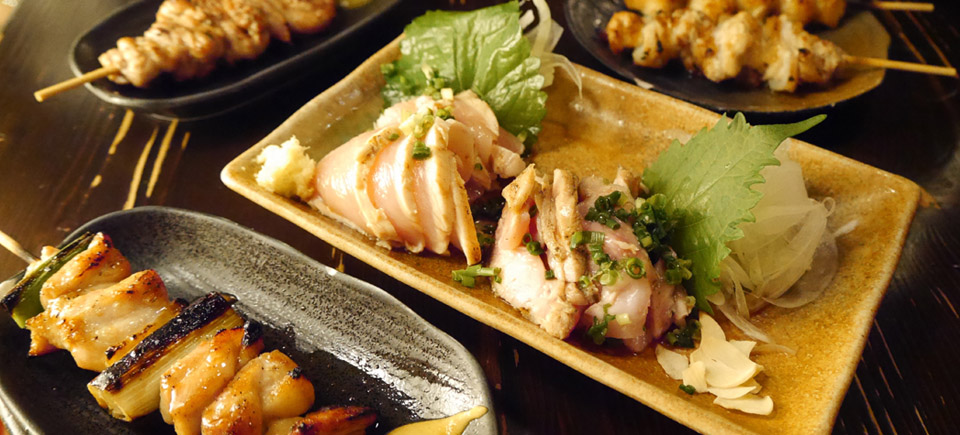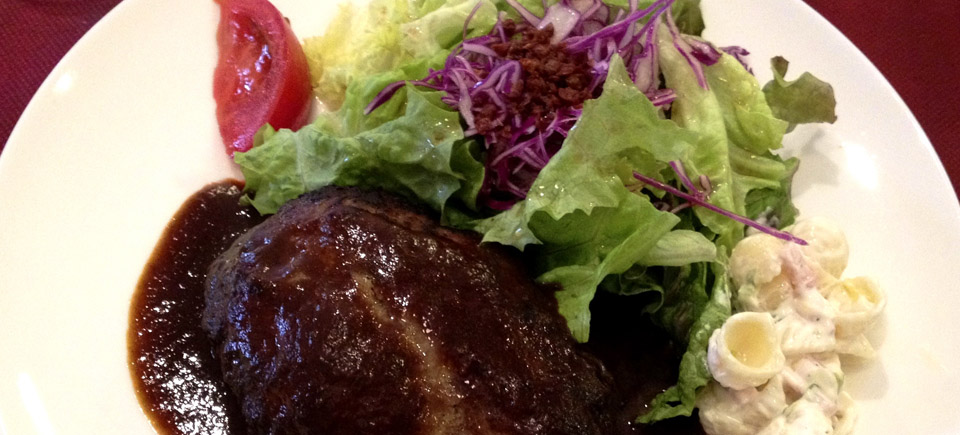Feature
Hidden Gems of Ura-Namba
Looking for an epicurean adventure? Snake your way through the mazy alleyways of the mysterious Ura-Namba to reach culinary enlightenment.
Ura-Namba, literally meaning “back” or “secret” Namba, is a corner of Osaka’s Minami district that until recently has remained shrouded in mystery. Now the neighborhood is gaining notoriety through its cornucopia of bars and eateries…it’s just a matter of knowing where to go.
Seemingly a far cry from its modern, offbeat manifestation, Ura-Namba was once synonymous with the furniture industry. Visit during the day and you’ll still see oji-sans tending to their chairs and cabinets, wiping assiduously in the few boxy shops that remain as they fill the air with the scent of oak and wood polish.
The area also has a proud history of performing arts, being home at one time or another to not only the Namba Grand Kagetsu theater (today the most prestigious purveyor of Osaka’s manzai comedy), but also the Kadoza; once the bastion of entertainment giants Shochiku (one of Japan’s leading film and theater companies), and the old Kabuki-za (kabuki theater) just a nod across the Midosuji.
This mix of artisans and artists caused something special to happen here, for today an atmosphere persists that is as rawly bohemian as anywhere in Kansai. On top of that, the bars that have always dotted the narrow passages have multiplied in recent years as the older generation gave way to a new, audacious group of youngsters eager to gentrify the neighbourhood into an epicurean paradise. And they succeeded, because a jaunt into Ura-Namba these days means a walk on the wild side, deep into a morass that tantalises not only the tastebuds but the receptors of all the other senses as well.
In order to get the best out of this mystical quarter it’s best to attack from the north, entering the dingy Doguyasuji shotengai just south of the Namba Grand Kagetsu. Whatever time of day or night, this shopping street is invariably as empty as your anticipant belly should be, but don’t be deterred as making the first right will take you into the bustle. On this alley can be found various izakaya, the brimming yakitori establishment Sumiyakishaten, and Q Japanese Saloon; a down-to-earth bar with a local feel offering all your favorite refreshments at reasonable prices.

Revellers enjoy a meal. Photo: Sam Evans
“The special thing here is that everybody is friendly and easy to talk to. There are fantastic places to eat and drink and if talking to different kinds of people makes you happy then this is the place for you,” says Ura-Namba frequenter Masahiro Sakai.
Turning left at this point will land you on the epicentral backstreet named Sennichijizosondori after the miniature, pinewood shrine nestled unassumingly down in the middle and curiously adding a kernel of steadiness to this otherwise hotbed of hedonism.
The first stop is undoubtedly DandeLion; a gem of a standing bar with the air of an Old West saloon, stocking whiskeys and bourbons of all kinds as well as wine, all over dark oak and under gloomy, amber lighting that makes life inside seem like an old sepia photograph. There’s an undoubtable nostalgia, and one can almost hear the reverberations of a discordant honkey tonk somewhere in the background. This just adds to the allure. Proprietor Kimiko Sakagami has been presiding here for six years and indubitably enjoys the common sight of her customers spilling over onto the street. Yes, it’s as popular as it is tiny so if you intend on knocking a few back here jam in early and with an empty bladder.
Meandering further down Sennichijizosondori will take you past a myriad of eateries, namely V’tres Plus; a cute cafe with a citrusy mediterranean zest, Enya; a modern yakitori place emitting irresistible wafts of charred chicken skin, and Shrimp Shrimp Namba Ebi Bar; which specialises in…well…shrimp. Italian Dining Pesca and Hillman Chinese restaurant provide for the slightly more upmarket choice, and each to their own for from within your sweet reverie, lulled by the divine scents, buzz of excited chatter and lights of all colors festooned enchantedly from building to building, you’ll realize that Ura Namba holds something for just about everybody.
It’s time for the main event; the building with no name. Blink and you’ll miss the entrance, so keep your eyes peeled for the skinny opening directly opposite the shrine. Enter into the cramped corridor with thin wood-board walls on all sides under bright lights that give this place an unmistakably beatnik feel, almost as if it were thrown together on a whim by a gang of hungry drunks. However, if the corridor doesn’t inspire grandeur, the bars and restaurants within these walls, 12 to be exact, certainly will. Bar Yuu, to the right of the entrance specializes in amazake, a traditional Japanese tipple. The kindly owner Kenji Ujita’s trademark is to season with koji, a main ingredient of Japanese sake, to give his dishes a unique taste. At ¥600 for his daily selected vegetables and meat platter it’s good value too. Dishes are served with a smile and a sprinkling of knowledge on the history of the place.

Entrance the building with no name (it’s actually called Sennichijizosondori Yokocho)
“This building used to be one big cooking utensil store. Four years ago it was gutted and made into what you see now,” Kenji explained. “The building has no name, we call it simply by its address when needed. The neighborhood is becoming more and more popular and no wonder, it’s a great place to come and socialize.”
Wander further into this maze of wood and wafts of delectable cuisines and you’ll find Toriumon; a kick-ass nabe restaurant tucked away in a corner. Owner Kochan guides me through the menu under the dim lights and snaking metallic vents that droop from the ceiling. As well as their celebrated chillitorinabe they offer hormonyaki and motsunabe to die for, all big enough to share and priced at around ¥1,500. Kochan reveals that they use only their own, original sauces and buy the whole cow, an aspect which enables them to use rare parts in their cooking seldom chewed on elsewhere.
Next door is the most bohemian of all the establishments that line these alleys, Bar FUu2. Owned by Toshiyuki Izumi and his wife Shi, this bar is a side project that compliments Toshiyuki’s daytime pursuit as an acclaimed tattoo artist at his studio TTAS Design. Run with the help of bar tender Chii, the bar itself is a house of spook with neon lamps illumining skeletons and other chilling trinkets.
“Anybody can come here and experience a different side of Japanese culture. It’s a great place to come and have fun and somewhere foreigners will find exciting,” said Toshiyuki. The specialty here is the daiquiri, which is as delicious as it is gargantuan and, for the size, a good deal at ¥1,200.
Readjust your eyes to the night and continue down Sennichijizosondori past yet more bars and Chimudon, a busy Okinawan izakaya that serves Asahi Superdry for only ¥100! Stumble a little further south and find yourself at the end of it all, coming to Nansandori and returning to reality.

















